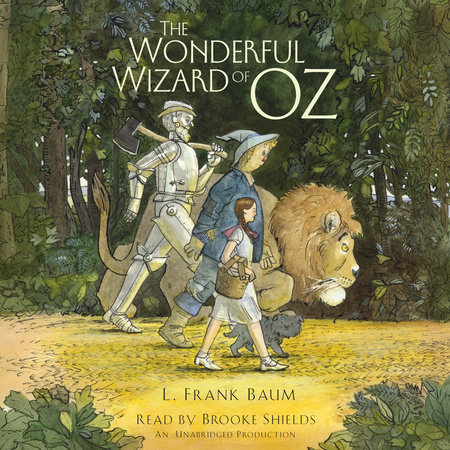The Wonderful Wizard of Oz Reader’s Guide
By L. Frank Baum


1. The Wonderful Wizard of Oz was first published in 1900 and met with both commercial and critical success. It continues to be a favorite, and the story has been translated to the stage and film numerous times. What do you think makes this tale so appealing, so timeless, and so easily adapted to other media?
2. What roles do money and capitalism play in The Wonderful Wizard of Oz? What is valued in the land of Oz as opposed to what is valued in the real world?
3. In addition to being a writer, L. Frank Baum was an actor and playwright. Does theatricality play a role in this book? How? What role does illlusion play in the story?
4. The Wonderful Wizard of Oz is said to be the first American fairy tale, and L. Frank Baum had indeed aspired to write a fairy tale that was different from the older, mostly European ones. How is this story the same as or different from, for example, those by the Brothers Grimm? Is it particularly American? If so, in what way(s)? What makes it unique?
5. One of the things that L. Frank Baum did not like about traditional fairy tales was the didactic way in which they taught
morals and values. Does his story express any particular values or moral lessons? If so, how does he communicate them?
6. Though this story has had a timeless appeal, is there anything time-bounded or dated about it? Are there aspects of the story, characters, style, or setting that decrease the accessibility or appeal of the book for a modern audience?
7. William Wallace Denslow’s illustrations have been an essential part of this book since its first publication. In some cases, these illustrations anticipate the action in the text. What effect do the illustrations have on your reading of the story?
8. The Scarecrow yearns for a brain, but in reality he is the most intelligent of the small group in which Dorothy travels. Is this irony present elsewhere in the story? If so, what do you suppose Baum’s purpose is in using this device?
9. Baum has been praised for his ability to include psychological and philosophical insight in a fantastical children’s story. In what ways is this story psychologically and/or philosophically insightful or sophisticated?
10. Analyze the character of the Wizard. Why does he behave the way he does? Is his behavior excusable or not? He tells Dorothy that he is a good man but a bad wizard. Do you agree?
11. What is the significance of the delicate people in the Dainty China Country? What is Baum saying about beauty and/or about sensitivity in this chapter?
12. In his Preface to The Wonderful Wizard of Oz, Baum says that he aimed to create a tale in which “wonderment and joy are retained and the heart-aches and nightmares are left out.” Would you say he succeeded? Do you think that this type of optimism and pure entertainment are valuable? Why or why not?
13. Are there ways in which the characters and political dynamics in Oz could be likened to real-life people and political dynamics during Baum’s time? How about during our time?
14. Why do you think Baum wrote this story when he did? Was there anything going on in the world at that time that might have led him to want to write a pure fairy tale?
15. What are the power dynamics in Oz? Who has power and who lacks it? How does one gain and lose power in Oz?
16. Baum’s mother-in-law was a feminist and a suffragette. Do you think the ideals of feminism influenced Baum’s writing of The Wonderful Wizard of Oz? In particular, how would you view Dorothy and the witches in a feminist context?
Just for joining you’ll get personalized recommendations on your dashboard daily and features only for members.
Find Out More Join Now Sign In